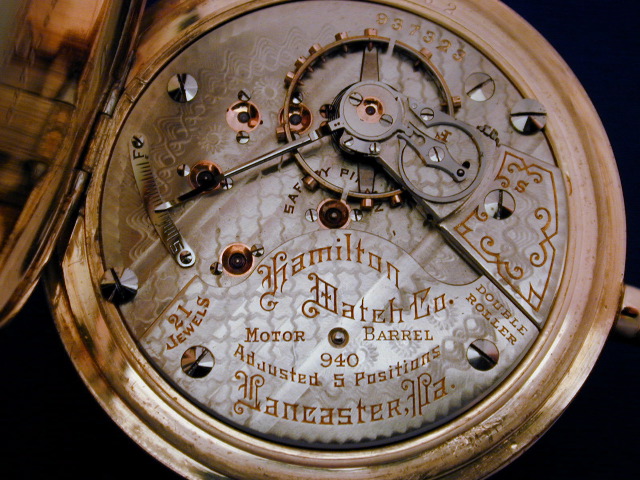
| WWT Shows | CLICK TO: Join and Support Internet Horology Club 185™ | IHC185™ Forums |

|
• Check Out Our... • • TWO Book Offer! • |
Welcome Aboard IHC185™  Internet Horology Club 185
Internet Horology Club 185  IHC185™ Discussion Site Main Page
IHC185™ Discussion Site Main Page  Horological Discussions, Questions and Answers
Horological Discussions, Questions and Answers  Pocket Watch Discussions
Pocket Watch Discussions  Determining the age of an engraving
Determining the age of an engraving
 Internet Horology Club 185
Internet Horology Club 185  IHC185™ Discussion Site Main Page
IHC185™ Discussion Site Main Page  Horological Discussions, Questions and Answers
Horological Discussions, Questions and Answers  Pocket Watch Discussions
Pocket Watch Discussions  Determining the age of an engraving
Determining the age of an engravingGo  | New Topic  | Find-Or-Search  | Notify  | Tools  | Reply to Post  |  |
An issue in a recent thread was whether a particular engraving was old or current. One contributor said that he’d have to see it in his own hands to decide. What do you look for to make a determination like that? | |||
|
| IHC Life Member |
I'm not sure you could tell if the engraving on a movement is old or current. You'd think that old might be a bit less crisp and maybe a little faded. Maybe a little oxidation. Maybe a little dirt. If it were old, it certainly should match the surroundings. To me, a freshly scratched piece of metal might stick out like a sore thumb. Larry IHC Member 25 IHC Life Member (L6) | |||
|
| IHC President Life Member |
Say Larry, maybe metal shavings beside the watch would be a clue! But seriously, I can tell you the thing looked recent to me simply based on the way it was done. From time to time some crudely marked movement shows up on eBay. This seller avoided mentioning it, but others have had speculation about "The Railroad" or "The Inspector" adding "Special" or "Extra" or grade numbers to the movement when to me they look like recent additions done at the local shopping mall. My understanding is when the "Marked Movement" rule came into play those unmarked movements in RR time service were "grand-fathered" meaning they were accepted as long as they passed inspection requirements. Newly purchased watches entering time service had to be marked with the grade, and I'd sure think that meant factory marked rather than scratched with a pocket-knife at someone's kitchen table. Story goes that Hamilton would add the grade number to movements sent in for factory service. Perhaps, and I'd also believe they would have added the grade or other markings to unsold movements still in factory inventory. Those would certainly have the same basic look as factory production work. I don't buy the stories we hear about the crude looking additions any more than I'd accept an altered serial number. Let me be clear on this, I'm not accusing the seller in the subject auction of anything improper, I would have no reason to. But frankly for my money I want a correctly marked movement or I don't want it at all. The artistically rendered Hamilton factory markings would be very difficult to falsify...  | |||
|
Thanks guys! I imagine that oxidation and dirt could represent 5 years or 105, absence of oxidation and dirt could represent recent service, a bit less crisp could represent careless service. I bet Larry’s right on when he says he’s not sure you could tell if the engraving on a movement is old or current, unless as Lindell illustrates so well it's factory-original. | ||||
|
| Powered by Social Strata |
| Your request is being processed... |
|
Welcome Aboard IHC185™  Internet Horology Club 185
Internet Horology Club 185  IHC185™ Discussion Site Main Page
IHC185™ Discussion Site Main Page  Horological Discussions, Questions and Answers
Horological Discussions, Questions and Answers  Pocket Watch Discussions
Pocket Watch Discussions  Determining the age of an engraving
Determining the age of an engraving
 Internet Horology Club 185
Internet Horology Club 185  IHC185™ Discussion Site Main Page
IHC185™ Discussion Site Main Page  Horological Discussions, Questions and Answers
Horological Discussions, Questions and Answers  Pocket Watch Discussions
Pocket Watch Discussions  Determining the age of an engraving
Determining the age of an engraving©2002-2025 Internet Horology Club 185™ - Lindell V. Riddle President - All Rights Reserved Worldwide

